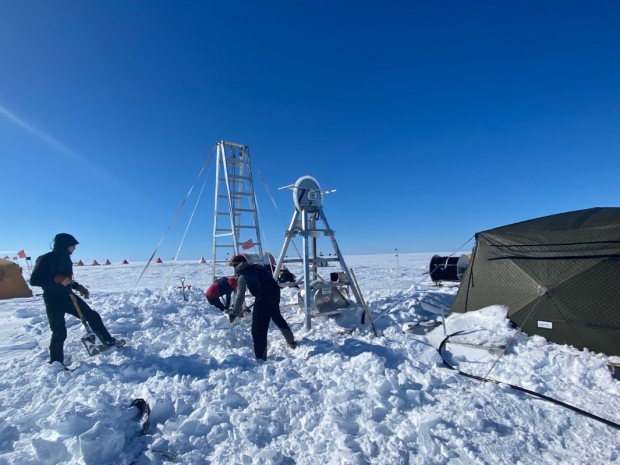SOURCE: NYU
DATE: January 29,2020
SNIP: A team of scientists has observed, for the first time, the presence of warm water at a vital point underneath a glacier in Antarctica—an alarming discovery that points to the cause behind the gradual melting of this ice shelf while also raising concerns about sea-level rise around the globe.
The recorded warm waters—more than two degrees above freezing—flow beneath the Thwaites Glacier, which is part of the Western Antarctic Ice Sheet. The discovery was made at the glacier’s grounding zone—the place at which the ice transitions between resting fully on bedrock and floating on the ocean as an ice shelf and which is key to the overall rate of retreat of a glacier.
Thwaites’ demise alone could have significant impact globally.
It would drain a mass of water that is roughly the size of Great Britain or the state of Florida and currently accounts for approximately 4 percent of global sea-level rise. Some scientists see Thwaites as the most vulnerable and most significant glacier in the world in terms of future global sea-level rise—its collapse would raise global sea levels by nearly one meter, perhaps overwhelming existing populated areas.
While the glacier’s recession has been observed over the past decade, the causes behind this change had previously not been determined.
The scientists’ measurements were made in early January, after the research team created a 600-meter deep and 35-centimeter wide access hole and deployed an ocean-sensing device to measure the waters moving below the glacier’s surface. This device gauges the turbulence of the water as well as other properties such as temperature. The result of turbulence is the mixing of fresh meltwater from the glacier and salty water from the ocean.
It marks the first time that ocean activity beneath the Thwaites Glacier has been accessed through a bore hole and that a scientific instrument measuring underlying ocean turbulence and mixing has been deployed. The hole was opened on January 8 and 9 and the waters beneath the glacier measured January 10 and 11.

